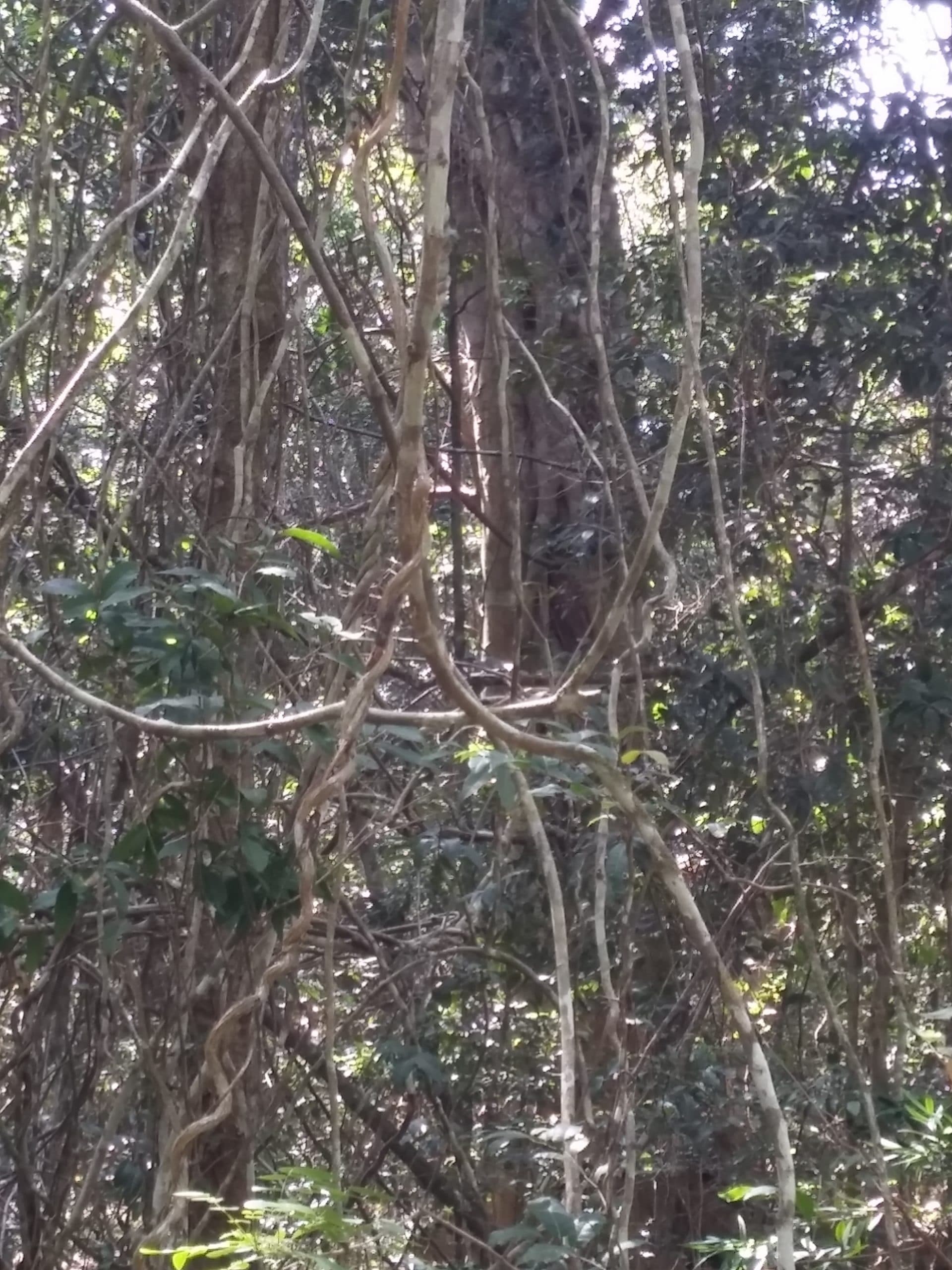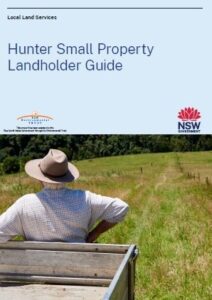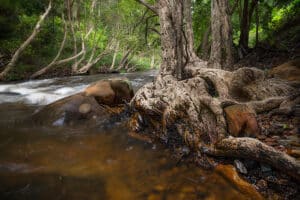BRUSH BLOODWOOD
To the right is a tree with pinkish brown bark, the Brush Bloodwood Baloghia inophylla. An interesting feature of the Brush Bloodwood is that it expels its seeds from its hard and woody seed capsules with considerable velocity.
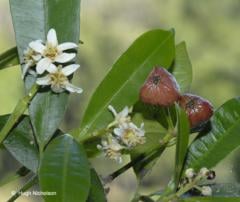
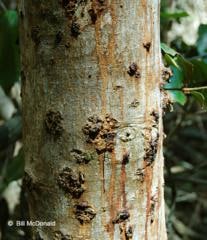
COASTAL BANKSIA
Opposite is a very large Coastal Banksia and you may see some of the woody seed cones on the track. Coastal Banksias can be distinguished from other Banksias by the leaves which have smooth margins and are much paler (silver-white) on the underside.

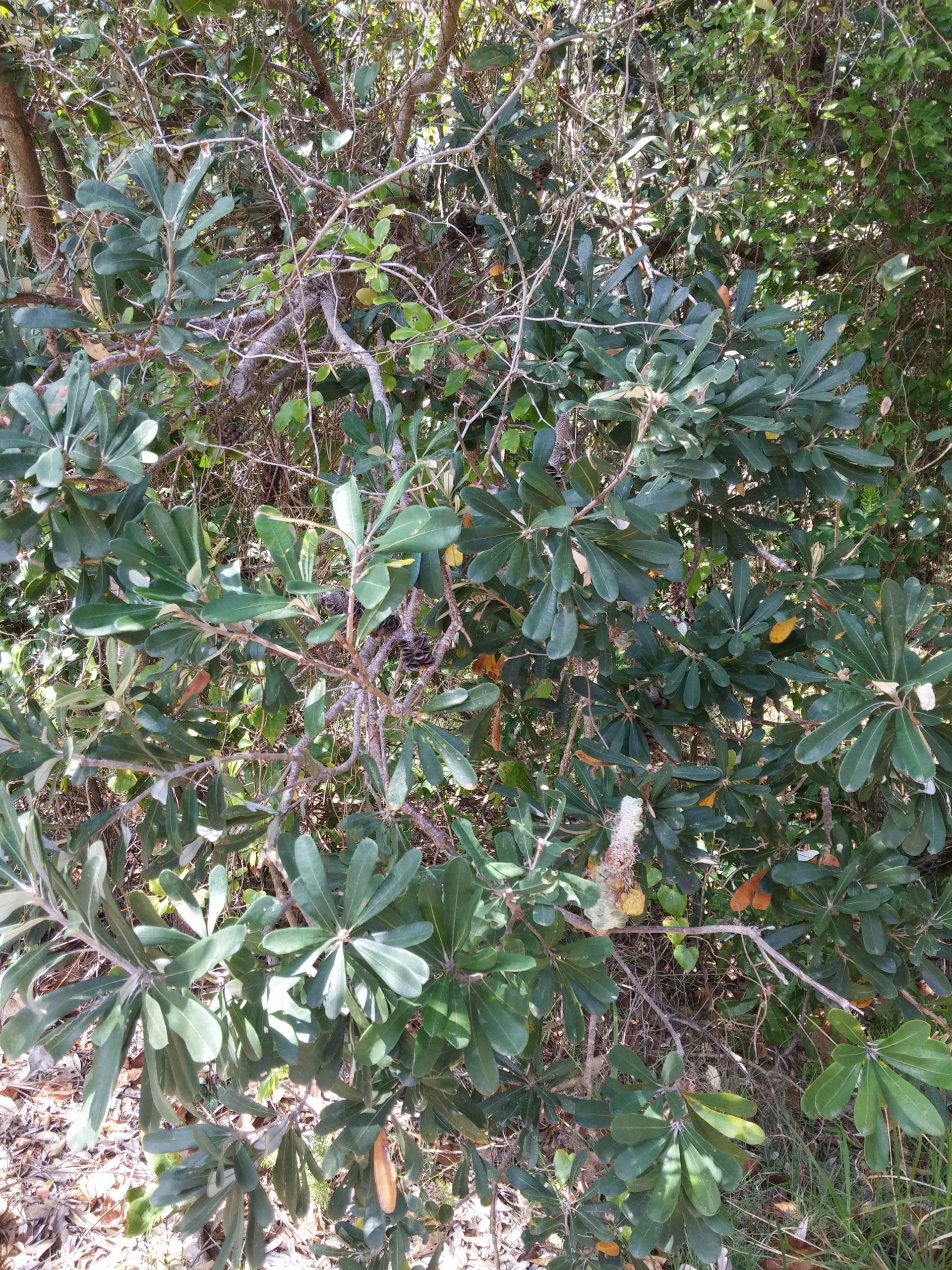
PLUM PINE
Around the Banksia are numerous saplings of Plum Pine Podocarpus elatus which has very narrow glossy green leaves 3 to 25 cm long. The Plum Pine has easy to distinguish fruit, seen in the autumn months, which unusually is in two parts – a hard, dark inedible seed about 1 cm across, and a larger, fleshy, purple-black, seedless, grape-like edible ‘fruit’ which is actually a modified stalk.
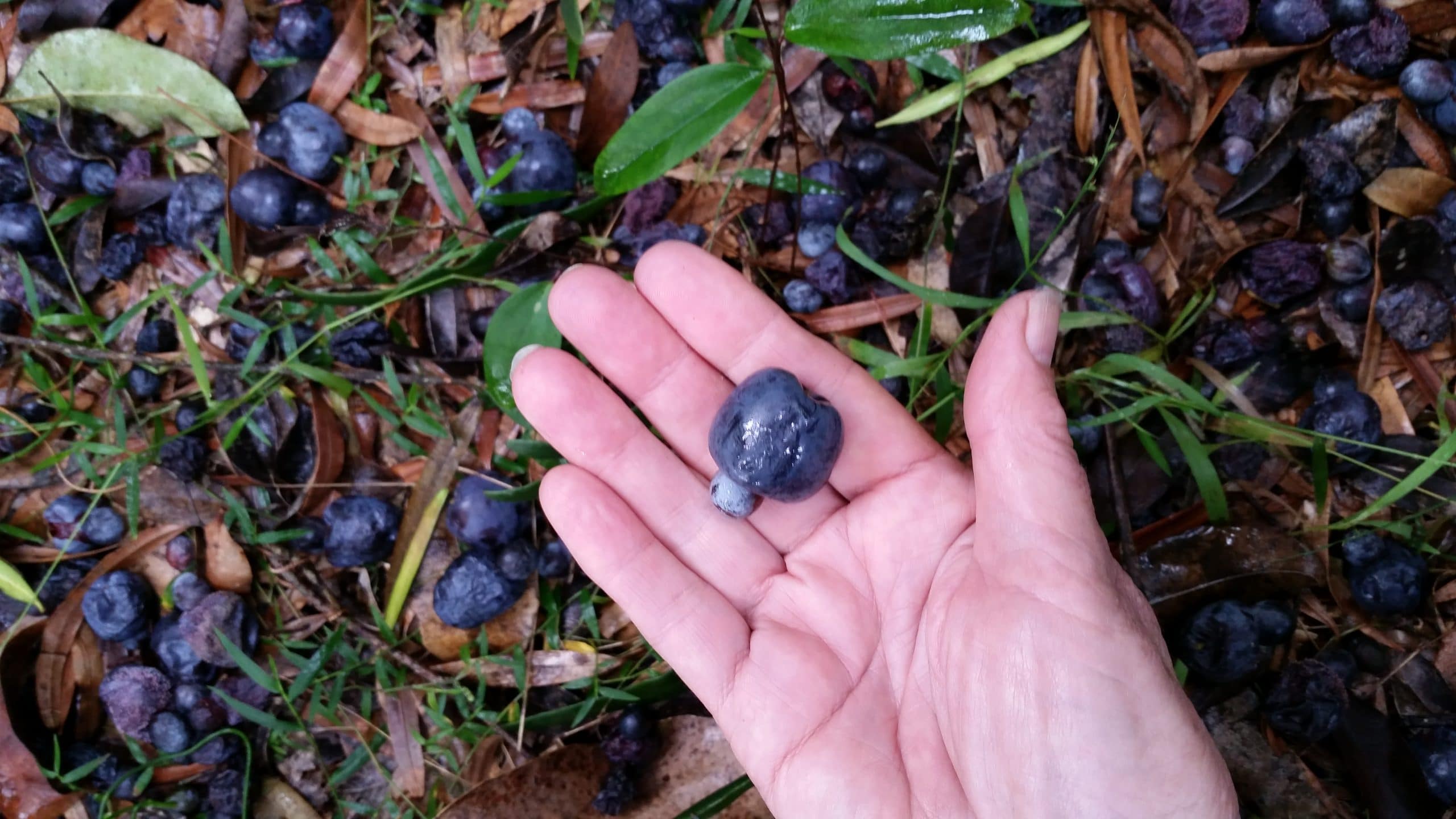
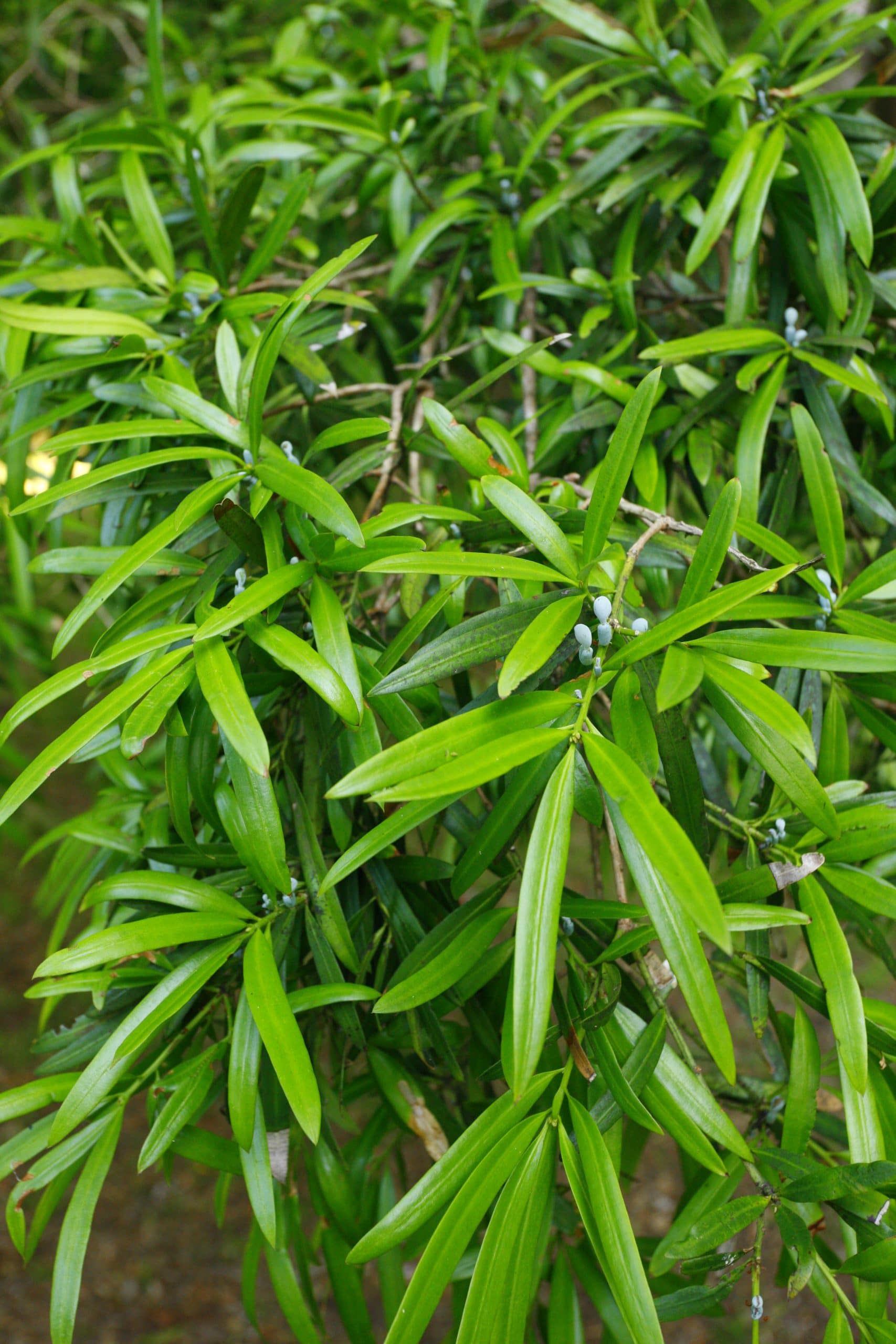
LIANES
As you continue, you will see lots of young saplings and large woody vines (lianes) to the left of the track, reaching up to the sunlight above the canopy.
